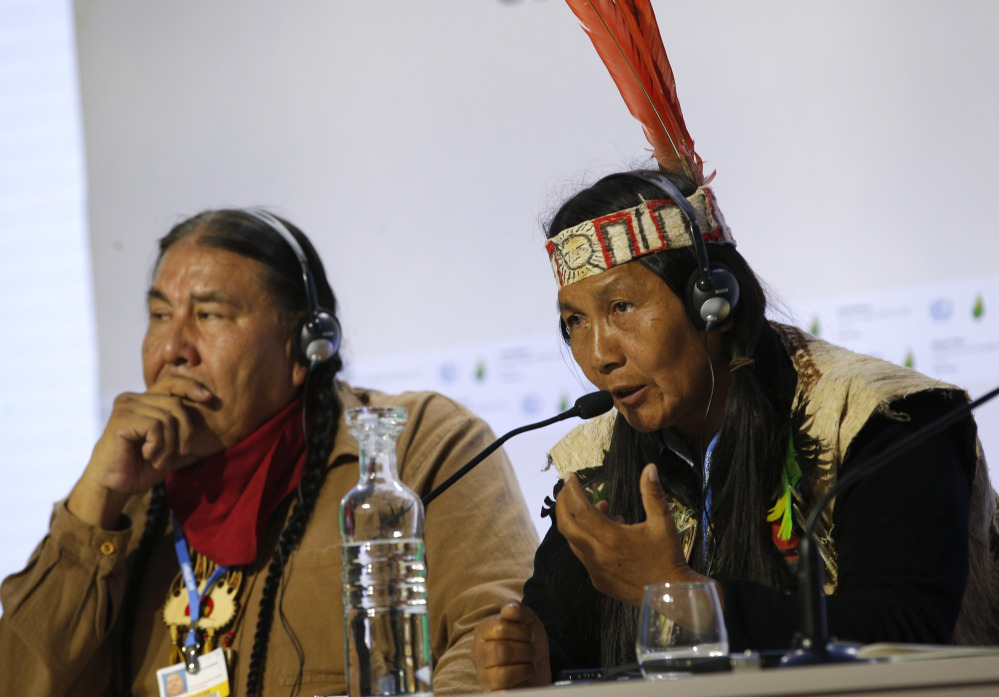Ten days.
That’s how many additional days, after President Obama departed Tuesday from Paris, this pivotal United Nations’ climate change meeting will continue to go on. And that’s understandably a bit confusing – world leaders showed up and gave speeches, major clean energy investments were announced, solar energy expansions were planned. So what else could be on the agenda here?
The Paris climate meeting has indeed been heavily front-loaded – not only by the appearances of world leaders, but also by the announcement of well over 100 national climate change pledges, or “intended nationally determined contributions,” in the months running up to the meeting. But the back end is where the world will determine just how much progress can be locked in to truly address climate change.
What comes next is perhaps not as glamorous, but it’s actually critically important. Or as Obama himself put it a Tuesday: “The task that remains here in Paris is to turn these achievements into an enduring framework for progress that gives the world confidence in a low-carbon future.”
The quest to ensure strengthening of country commitments: To better understand what still has to happen in Paris, consider that the existing INDCs, in their entirety, are generally agreed to be inadequate to keep the warming of the planet below the target of 2 degrees Celsius above pre-industrial levels. The United Nations Framework Convention on Climate Change has floated the idea that these pledges might be able to hold warming to 2.7 degrees Celsius. Other assessments have been more pessimistic.
So one key component of the negotiations is to come up with a mechanism that will ensure that countries strengthen their commitments over time.
DEADLINE LOOMING
What’s needed is “some agreement where we agree to revisit the INDCs, say every five years, with the hope that we can ratchet them up to the point where they really will bring the problem under control. To me, that would be the most important positive outcome,” said Philip Duffy, president of the Woods Hole Research Center in Massachusetts.
Absolutely critical to this, said David Waskow, director of the International Climate Initiative at the World Resources Institute, is that commitments are first revisited in 2020, not 2025 or later, and that much more happens than simply taking stock of where countries are at that time. “Waiting for 10 years really would be waiting for too long,” Waskow said.
Also very important in the Paris agreement is setting in place some type of protocol or system for ensuring that countries are accurately reporting their emissions. This is wonky but quite important. Indeed, it was in many ways epitomized this very year by the carbon explosion that happened in Indonesia, as raging peat fires placed an estimated additional 1.75 gigatons of carbon dioxide into the atmosphere.
We need to know what countries’ forests, peat bogs, permafrost and so on are doing to the climate – but most important, we also need to know what their fossil fuel burning is doing. However, as of now, there are widely varied levels of reporting of emissions, and disparate abilities to even measure them.
That’s why one of the critical issues in Paris is “exactly what does the verification scheme look like,” said John Coequyt, head of international programs at the Sierra Club.
FOR GOOD MEASURE
A good goal would be able to see, on a yearly basis, whether a given country’s emissions reduction pledges are actually reducing emissions.
And then, finally, there’s the matter of climate finance. In the Copenhagen accord in 2009, developed countries pledged to “commit to a goal of mobilizing jointly USD 100 billion dollars a year by 2020 to address the needs of developing countries.” This was both for climate change adaptation but also for other measures, like technology transfer and capacity building, and installing clean energy.
In some ways, this may be the most important part of the Paris agreement. “How the developing world develops, and the carbon intensity of their development, it’s really the whole story,” said Duffy, of the Woods Hole Research Center.
One critical issue here, noted Waskow, will be ensuring that the money – meant to come from both the public and private sectors – is distributed evenly across different areas, and in particular, that funding adaptation to climate change does not get short shrift.
Finally, there is the contentious issue of “loss and damage,” or how to deal with the fact that we’ve already unleashed some impacts of climate change that are likely to be damaging and also irreversible, such as rising sea levels. In particular, small island nations have suggested that the countries responsible for the large bulk of emissions – like the U.S. – ought to compensate them financially.
So in sum: The world isn’t going to be suddenly saved because of Paris. Rather, thanks to the current momentum going into the meeting, it is more accurate to say that the world might be put on the path to be saved – or rather, damaged less.
Ultimately, one of the most important things Paris may accomplish is allowing us to measure where we actually are when it comes to trying to minimize harm from climate change and ultimately, over decades, get the problem under a measure of control.
Copy the Story LinkSend questions/comments to the editors.



Success. Please wait for the page to reload. If the page does not reload within 5 seconds, please refresh the page.
Enter your email and password to access comments.
Hi, to comment on stories you must . This profile is in addition to your subscription and website login.
Already have a commenting profile? .
Invalid username/password.
Please check your email to confirm and complete your registration.
Only subscribers are eligible to post comments. Please subscribe or login first for digital access. Here’s why.
Use the form below to reset your password. When you've submitted your account email, we will send an email with a reset code.